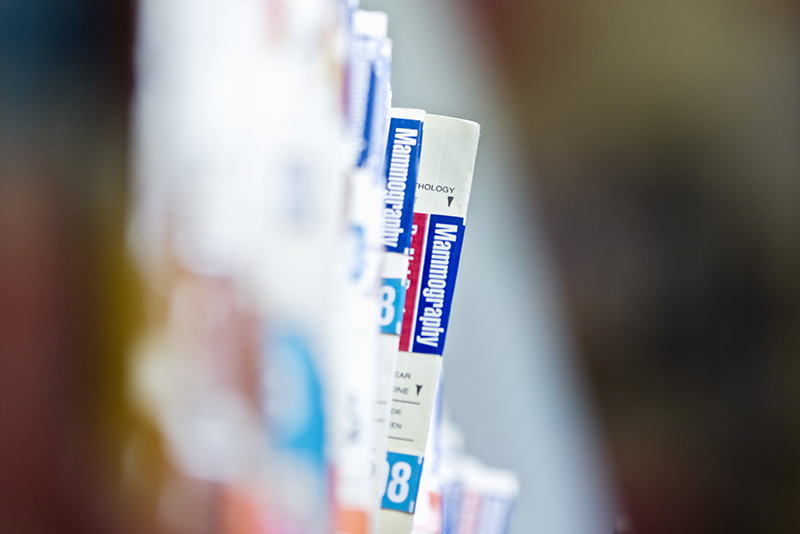Choice Related to More Breast Cancer Screening
Few women under 50 perceive that decision about test is up to them, study finds

Women under 50 who are given a choice about whether to have mammograms are three times more likely to undergo the screening, but improved patient–provider communication does not influence mammography rates, says a study led by Boston University School of Public Health (SPH) researchers.
The study, published in the Journal of Health Communication, found that mammogram utilization was higher among women who perceived being given a choice by their providers about whether to undergo screening. In 2009, breast cancer screening guidelines were updated by the US Preventative Services Task Force to recommend regular screening starting at age 50, rather than 40. The recommendations included a call for shared decision-making (SDM) between doctors and patients, especially for women younger than 50, for whom widespread population screening was no longer recommended.
The study found that few women under age 50—31 percent—perceived that they were being given a choice to undergo screening. But when they did, they were more likely than others to opt for mammography. What was unclear was whether physicians who didn’t give patients a choice instead recommended against mammography, based on the new guidelines.
The results “could be influenced by the content of the physician messages about cancer screenings,” the study says. “Our finding of increased utilization among women who perceived being given a choice…may have been the result of differences in provider recommendations.”
The low rate of women who reported that they were given a choice was surprising, say the researchers, given that many professional recommendations suggest using a shared decision-making approach.
“Our findings support the notion that SDM has yet to be fully realized in clinical practice,” the study says. “When patient values are in conflict with expert recommendations, it is an opportune time for physicians to engage in discussions with patients to support more informed decisions about the short- and long-term benefits and risks of screening.”
While choice led to more screening, better patient-provider communication—measured in terms of full explanations and involvement in decisions, for example—did not influence mammography rates. The research team says perceptions of choice may vary based on patient characteristics that are independent of how well physicians communicate. Rates of mammography were higher among women who were married and those who had higher incomes, a cancer history, or a regular care provider.
Interestingly, the study found that women with higher education levels were less likely to receive mammograms. The authors speculate that these women “are either more informed about both benefits and risks, or more likely to be aware of the most current US Preventative Services Task Force recommendations.” They say further research on the interrelationships between SDM factors, education, and utilization of screening is needed.
The study was led by Christine M. Gunn, a research assistant professor at SPH and the BU School of Medicine (MED), and Marina Soley-Bori, an SPH PhD candidate and research assistant. Co-authors include Lewis Kazis, SPH professor of health policy and management; Howard Cabral, SPH professor of biostatistics; and Tracy A. Battaglia, MED associate professor of medicine. The study originated with a paper that Gunn and Soley-Bori did in an advanced health services research methods course taught by Kazis and Cabral.
Comments & Discussion
Boston University moderates comments to facilitate an informed, substantive, civil conversation. Abusive, profane, self-promotional, misleading, incoherent or off-topic comments will be rejected. Moderators are staffed during regular business hours (EST) and can only accept comments written in English. Statistics or facts must include a citation or a link to the citation.